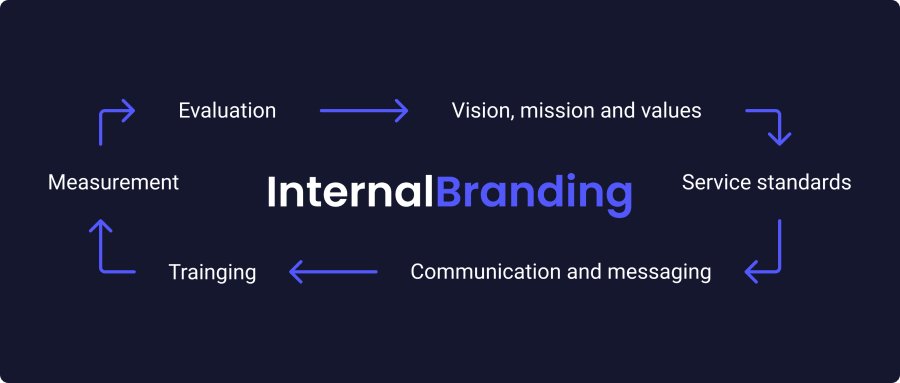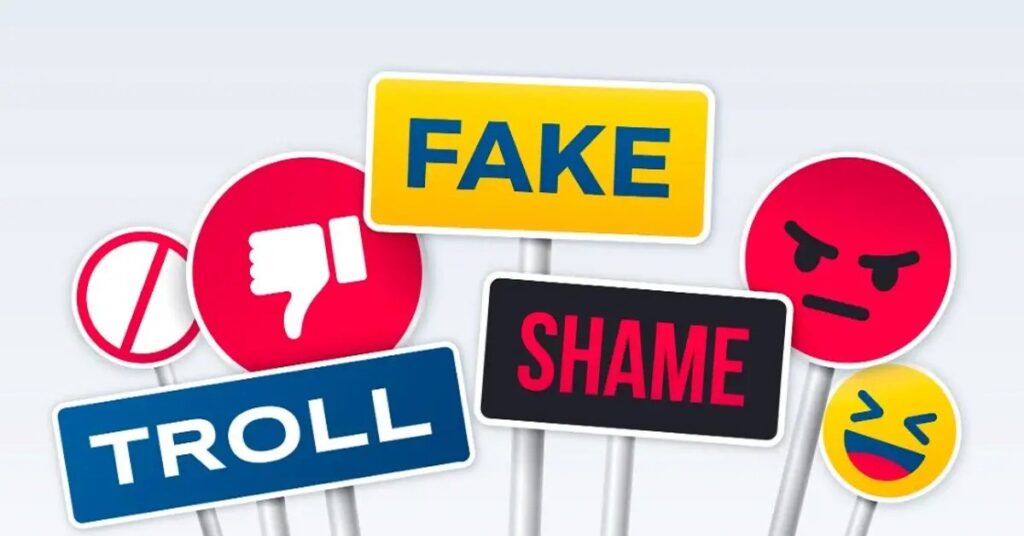Internal branding is more than just a marketing term. It is a powerful way to create a positive workplace culture, boost employee engagement, and achieve long-term success. While external branding is focused on promoting your company to customers, internal branding is about creating an identity that employees can be proud of and connect with. However, developing an authentic internal brand takes effort but pays off through increased productivity and talent attraction. Follow these tips to craft an internal brand that motivates your team.

Defining Internal Branding
Internal branding is the process of creating a positive image or identity for your company or department that will make employees proud to be a part of it. It’s about developing a culture that considers your employees’ values, ensuring they feel they have a role in the department, and creating a sense of unity and purpose among employees. Internal branding establishes a positive image and identity for a company or department. It goes beyond logos and marketing to shape an organizational culture employees take pride in.

Benefits of Internal Branding
Compelling internal branding provides many advantages:
- Higher employee engagement and morale: When employees feel connected to the company’s mission and values, they are more likely to be engaged in their work and have higher morale. This can lead to increased job satisfaction, motivation, and productivity.
- Improved talent recruitment and retention: A strong internal brand can help attract top talent to your company. When potential employees see that your company has a positive culture and values its employees, they are more likely to want to work for you. Additionally, when employees feel engaged and valued, they are less likely to leave the company, leading to lower turnover rates.
- Clearer communication and collaboration: Effective internal branding can help improve communication and collaboration within the company. When employees understand the company’s mission and values, they are more likely to work together towards common goals. This can lead to increased efficiency and productivity.
- Enhanced productivity and performance: When employees are engaged, motivated, and working together effectively, they are more likely to perform at their best. This can lead to increased productivity and improved performance for the company as a whole.

Steps to Build Your Internal Brand
Follow these key steps to develop an authentic internal brand:
1. Define your mission and values
- Start by clearly defining your company or department’s mission and values. This will serve as the foundation of your internal brand.
- Keep your mission statement concise, easy to remember, and free of jargon or buzzwords. Make sure it reflects your employees’ values and resonates with them.
2. Communicate your mission and values
- Once you have defined your mission and values, it’s crucial to communicate them effectively to your employees.
- Display your mission statement prominently in common areas such as the break room or office lobby. Include it in employee newsletters, email blasts, and other internal communications.
- Ensure that new hires are introduced to your mission and values from day one.
3. Develop a positive workplace culture
- Your internal brand goes beyond just a logo or tagline. It is an extension of your company’s culture.
- Foster a positive workplace culture that encourages open communication, employee participation, and a sense of community.
- Create opportunities for employees to provide feedback, share ideas, socialize, and bond with their colleagues.
- Recognize and reward employees for their achievements and show appreciation for their hard work.
- Provide growth opportunities to help employees develop their skills and reach their potential.
4. Create a visual identity
- Develop a visual identity that represents your internal brand. This may include carefully chosen logos, colors, and fonts.
- Keep your visual identity simple and easily recognizable. Avoid using too many colors or fonts to maintain consistency.
- Ensure that your visual identity aligns with your mission and values and resonates with your employees.
5. Develop internal communications
- Internal communications play a crucial role in building an internal brand. They keep employees informed about company news and reinforce your brand’s mission and values.
- Utilize various internal communication channels such as emails, newsletters, intranets, town hall meetings, and memos.
- Regularly update your employees on your brand’s progress and any changes or initiatives.
6. Train employees on your brand
- Once you have established your internal brand, it’s important to train your employees on it.
- Provide training sessions to ensure that everyone understands your brand’s mission and values, visual identity, and internal communications strategy.
- Consistency in representing your brand across the company is key.
7. Get feedback from employees
- Building an internal brand is an ongoing process. Regularly seek feedback from your employees to identify areas for improvement and make necessary adjustments.
- Conduct surveys, focus groups, or one-on-one interviews to gather feedback and insights from your employees.
- Use this feedback to refine and strengthen your internal brand, further enhancing the relationship between your company and its employees.
8. Evaluate and adjust as needed
- As your company or department evolves, periodically evaluate your internal brand and make adjustments as needed.
- Review your mission statement, visual identity, and internal communications to ensure they remain aligned with your company’s goals and culture.
- Consider adding new communication channels or updating existing ones to keep your internal brand fresh and relevant.
9. Celebrate your successes
- Don’t forget to celebrate your successes along the way. Recognize and reward your employees for their contributions and achievements.
- Host company wide events, send congratulations emails, give out awards, and express appreciation during team meetings.
- Celebrating successes can boost morale, foster a sense of pride in your internal brand, and keep employees engaged and motivated.
Internal Branding Drawbacks
While internal branding can provide many benefits, it is not without its drawbacks. Here are some of the potential cons of internal branding:
- Diluting the corporate brand: If not done carefully, internal branding can dilute the corporate brand. This can happen if the internal brand is not aligned with the overall corporate brand, or if it is not communicated effectively to employees. As a result, employees may become confused about the company’s mission and values, leading to a weakened corporate brand.
- Branding for the sake of it: Some companies may engage in internal branding simply because it is trendy or because they feel they should be doing it. However, if there is no clear strategy or purpose behind the branding efforts, they are unlikely to be effective. This can lead to wasted time and resources, and may even harm the company’s reputation.
- Creating low-quality brands: If not done properly, internal branding can result in the creation of low-quality brands. This can happen if the branding efforts are rushed or not well thought out. A low-quality internal brand can harm employee morale and engagement, and may even damage the company’s reputation.
By making ourselves aware of these challenges while moving forward with internal branding, brands can strategize effective branding mechanism they have to adopt to succeed in their respective fields.
The Big Picture
To conclude, compelling internal branding can provide many benefits for both employees and the company. By creating a positive image and culture, companies can improve employee engagement, attract top talent, enhance communication and collaboration, and boost productivity and performance.By investing time in thoughtful internal branding, you can unite your team around shared goals and values. The payoff will be a collaborative, motivated workplace where people thrive.



